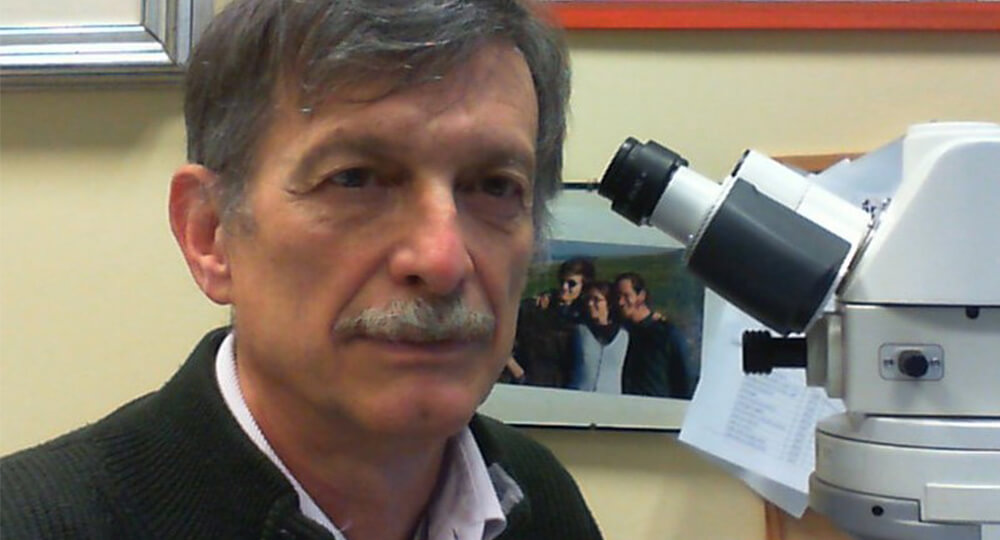A new Era in Anatomical Pathology
Challenges and opportunities on the road to precision medicine

An Interview with Dr Mattia Barbareschi – Director of the Multizone Operational Unit of Anatomical Pathology at Santa Chiara Hospital in Trento-Italy.
Brief professional profile:
- Director of the Multizonal Operational Unit of Anatomical Pathology at S. Chiara Hospital in Trento,
- Director of the Laboratory Medicine Department, Provincial Agency for Health Services, Trento
- Specialist in Anatomy and Pathological Histology.
- PhD in Human Pathology.
- Scientific director of the “Pathologica” journal, the official publication of the Italian Society of Anatomical Pathology and Cytology.
- Author of 232 articles in international and Italian scientific journals
1. What is the role of a pathologist? And what influenced your professional career as a doctor, when choosing to specialize in Anatomical Pathology?
Anatomical Pathology studies human organs, tissues, and cells, to make a diagnosis based on the analysis of their macro and microscopic morphological characteristics and on their biomolecular characteristics. Any organs, tissues and cells removed in outpatient settings or in the operating room are examined in the Anatomical Pathology unit. The areas of diagnosis range from the population-scale prevention of cancer (e.g., cervical cancer screening), the diagnosis of a variety of inflammatory processes and the diagnosis (or exclusion) of malignant neoplasms and their staging. Autopsies are another area pathologists deal with, and although we are far less involved in these than other areas, the public knows us best in relation to them. Autopsies aim to find the causes of death in clinically not evident cases, to allow clinicians to better understand the clinical evolution of their patients. The pathologist’s diagnosis is therefore the basis for defining the nature of and for planning the therapy for most neoplasms and of hundreds of inflammatory pathologies. The most recent evolutions of our discipline place us at the forefront in defining the essential parameters for the use of precision medicine criteria, so the right drug is given to the right patient. The information coming from Anatomical Pathology thus becomes not only a definition of a certain disease, but also the basis for correct and effective therapy.
It is therefore a fascinating branch of medicine because of its high cognitive content and its rapid development and evolution, which is based on the continuous discoveries that become known every day. I was lucky to be introduced to this world by my father (also a pathologist). I have been fascinated by the possibility of seeing a mysterious and fascinating world through a microscope ever since I was a child. My father supported my interest, and we were lucky enough to be able to share this profession; I was very lucky to have him among my teachers in the first years of my activity.
2. What exactly does your role as director of the Anatomical Pathology operating unit entail? What are the satisfactions and difficulties in your line of work?
The role of a director spans multiple levels, both technical-professional and managerial and administrative. I believe, the interpersonal element is among the essentials: it is necessary to put one’s collaborators in the best relational and professional conditions to bring out their talents. It is a job that involves an empathic attitude, an ability to listen and a willingness to get directly involved. Obviously, a director must be very competent and capable on the technical-professional and organizational side, bringing his (or her) own experience, competence, and strategic vision. However, it is no longer conceivable that a director could be competent in all areas of such a vast and constantly evolving profession: the director’s role is to understand how to solve the problem of complexity in scenarios that constantly change both in terms of knowledge and resources, human and material. The collaborators must therefore be placed in the best conditions to acquire ever-increasing professional skills, until the technical / professional role of the director is superfluous.

3. How is the diagnostic process of a histological examination structured and what are the most recent and promising innovations in your field?
The diagnostic process is a sort of relay race where the baton that changes hands is the patient biomaterial, which is identified, handled, and analyzed by multiple actors. The biomaterials that arrive in our laboratories are processed by highly qualified technical personnel who can produce very thin sections of tissue samples (2 – 3 thousandths of a millimeter thick), fix them onto glass supports (the slides) and color them with a variety of chemical reactive, monoclonal antibodies and nucleic acid probes. These reagents allow the pathologist to evaluate, in transmitted or fluorescent light, the morphology of tissues and cells and to evaluate their biomolecular characteristics in situ at the level of protein expression or DNA and RNA alterations. Furthermore, the same biomaterials are analyzed with a variety of technologies ranging from flow cytometry to numerous molecular biology techniques, including the so-called massive parallel sequencing or “next generation sequencing” techniques. These biomolecular investigations are revolutionizing both the way we classify and identify neoplasms, and the possibility of adopting the most appropriate and promising therapies. Some of these therapies are so effective that they have completely changed the natural course of certain diseases, which were formerly considered without hope but that can now be successfully treated. Finally, we are now in a phase of transition, as we move from the use of the optical microscope to the digital scanning of slides, to produce a slide image that can be studied on a high-definition monitor. This transition to a “digital Anatomical Pathology,” in addition to bringing numerous organizational benefits, opens the door to the extraordinary possibilities offered by artificial intelligence technologies, which, in the future, will be able to be a valid support for traditional diagnostics.
4. What challenges do you see in the next 10 years for Anatomical Pathology laboratories and for pathologists themselves?
The challenges are on multiple levels, organizational and cognitive. It is now essential for laboratories to have traceability and process control systems. This is a well-developed technology, but not yet always widely implemented in all laboratories. The laboratories will also have to find ways to optimize and concentrate instrumental and human resources, while at the same time trying to maintain close relationships with colleagues in the clinical departments. This difficult but unavoidable challenge can be facilitated by digital technologies. Certainly, the increase in knowledge will require individual pathologists to be increasingly specialized, as they will be required to provide increased information on defined fields. At the same time, a pathologist must maintain a general vision of pathologies, to be able to recognize unusual situations that may occur outside their natural context. The number of pathologists is also of concern: currently the number is limited and insufficient to cover clinical needs.
An area of particular interest is represented by the explosion of biomolecular knowledge, which will increasingly integrate with, and in certain contexts, replace traditional diagnostics. Consider, for example, the prevention of cervical cancer: in the past, the main test was the PAP-test, i.e., a morphological examination under the microscope of the cells of the uterine cervix; now the PAP test has been completely replaced by the biomolecular analysis of the presence of the HPV virus. The morphological analysis remains a fundamental corollary, but a limited number of these tests are now performed.
5. What technological aspects should the healthcare industry, working with the scientific world, focus on to further improve the quality and accuracy of the diagnosis of histological samples?
This aspect will be fundamental to facing the challenges we have just spoken about. Traceability and automation will be integrated themes on which to focus increased energy. Traceability means the interconnection of all phases of work, from the identification of the patient and consequent request for tests, to the delivery of the diagnosis to the treating physician and to the electronic health record. It therefore means the integration of different information systems, instruments, and work phases. Automation involves two distinct and interconnected areas: on the one hand, there is the automation of the workflow and process and, on the other, the automation of individual work phases. The automation of flow and processes allows us to optimize the way in which we manage our samples, which are changing. When switching from one “state” to another, they change their characteristics and number: we switch from containers in the liquid phase, which are used to generate several blocks of paraffin, which, in turn, will each be the source of multiple slides. The large and complex flow of these materials will increasingly require the use of automation technologies for their transport, distribution, control, and storage. These technologies will be essential if considering the current trend of concentrating activities in increasingly large and complex laboratories. Phase automation requires solving very sophisticated technical problems, such as the reproduction and improvement of the current professional activities of Anatomical Pathology technicians. Here, too, technology will be able to bring substantial improvements in the standardization of the work phases and their control in a fully tracked environment.
Finally, it will be necessary to achieve the widespread implementation of the full digitalization of cytological and histological preparations, solving the problems related to the storage and management of immense quantities of data. The final objective will be to have diagnostic support offered by artificial intelligence techniques, which must be integrated into the management systems of our operating units.

